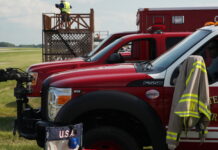If we think of a Safety Management System (SMS) as the skeletal structure inside the ICAS organization’s body, then the safety culture is the spine. Put simply, a positive safety culture is the creation of a work environment in which safety is routinely practiced and improved, regardless of whether it is being monitored or not. This overall culture is made up of four sub-cultures: an informed/educated culture, a reporting culture, a just culture, and a learning culture.
An informed culture refers to the level of awareness maintained by the air show industry leadership and the individual operators of any and all factors which could impact operational safety. Since an SMS requires accountability at all levels, it is incumbent on both industry leadership and the operators themselves to stay focused on potential threats, current trends, and any other factors which may affect the safety of air show operations. This means being proactive towards other performers, producers and air bosses, not just yourself, if you see any potential problems looming.
A reporting culture is the willingness of organizational members to report accidents, incidents, and errors (including near misses). In the aviation industry, we are often resistant to talking about anything negative with the FAA “looking over our shoulder,” but this is exactly what we need to do. With this in mind, the only way a reporting culture can be successful is by having a realistic just culture.
A just culture is one in which reporting is actively encouraged. The emphasis is on learning from these reports, not on blaming those involved. All members of the organization still need to be aware of the differentiation between acceptable and non-acceptable behavior. In a just culture, reports may be submitted anonymously, but if they are not, there has to be a non-attribution policy which sterilizes personal information about the reporter. The ASRS system run by NASA is a good example of how a just culture and a reporting culture work in consonance with each other.
Finally, the learning culture refers to the ability and readiness of our industry to take and analyze all of the safety-related data received from all sources. Once this analysis is completed, the organization can decide what actions it wants to take, and then must act upon these validated recommendations.
To put these four cultures in perspective, first we have to inform ourselves about potential problem areas, then establish ways that these can be reported when found. Next, we must make sure that everyone is comfortable that they are not putting anyone in jeopardy for doing so. And finally, we have to have ways to use the valuable information we have gotten to ensure the safest possible operations for all performers and personnel.








